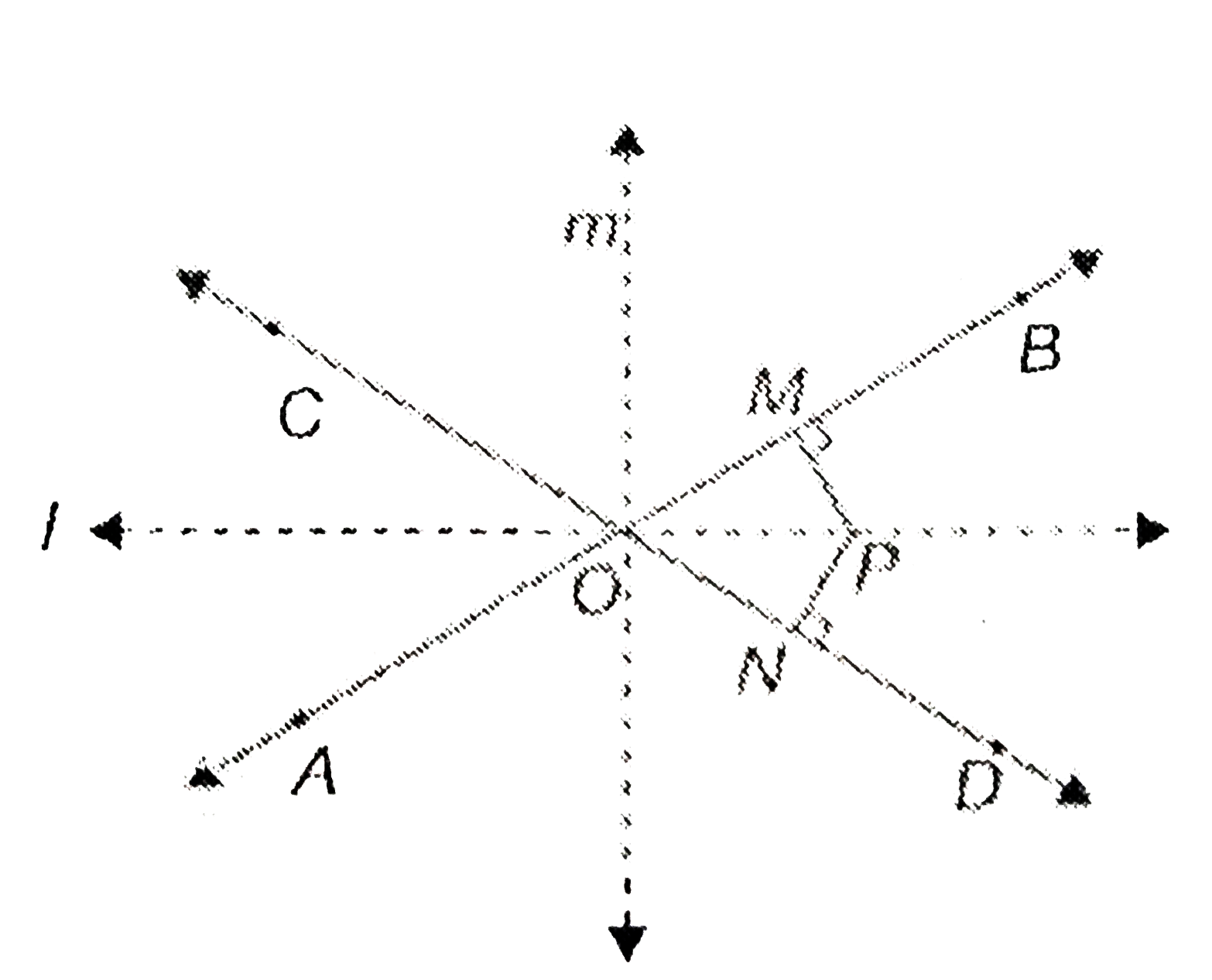InterviewSolution
Saved Bookmarks
| 1. |
Show that the locus of a point, equidistant from two intersecting lines in the plane, is a pair of lines bisecting the angles formed by the given lines. |
|
Answer» Solution :Step-1 : We intially prove that any point equidistant from two given intersecting lines lies on one of the lines bisecting the angles formed by given lines. Given : `overline(AB) and overline(CD)` are two lines intersecting at O. P is the point on the plane such that `PM=PN`. Line L is the bisector of `angleBOD` and `angle AOC`. Line m is thebisector of `angle BOC and angle AOD`. RTP: P lies on either of line LOR lien m. Proof : In `Delta POM and Delta PON , PM=PN`. OP is common side and `angle PMO=angle PNO=90^@` `therefore` By RHS congruence PROPERTY , `angle POM approx Delta PON`. So, `anglePOM =angle PON`, i.e., P lies on the angle bisector of `angle BOD` As l is the bisector of angle BOD and `angle AOC` , P lies on the lien l. Similarly if P lies in any of the regions of `angle BOC , angle AOCor angleAOD`, such that it is equidistant from `overline (AB) and overline (CD)`, then we can conclude that P lies on the bisector l or on the angle bisector m . Step: 2 We prove that any point on the bisector of one of angles formed by two intersecting liens is equidistant FORM the liens. Given : Lines `overline(AB) and overline(CD)` intersect at O. Lines l and m are the angle bisectors. Proof : Let l be the angle bisector of `angle BOD` and `angle AOC`, and m be the angle bisector of `angle BOC` and `angle AOD`. Let P be a point on the angle bisector, l as shown in the figure. If P coincides with O, then P is eqidistant from the line `overline(AB) and overline(CD)`. Suppose P is different from O. Draw the perpendiculars `overline(PM) and overline(PN)` from the point P onto the lines `overline(AB) and overline(CD)` respectively. Then in `Delta POM and Delta PON, angle POM=angle PON, angle PON =angle PMO =90^@ and OP ` is a common side. `therefore` By AAS congurence propery `Delta POM approx Delta PON` So, `PN=PM` (`because` Corresponding sides) , i.e., P is equidistant from the lines `overline(AB) and overline (CD)`. Hence , from the steps 1 and 2 of the proof it can be said that the point which is equidistant from the two intersecting lines is the pair of the angle bisectors of the two pairs of vertically opposite angles formed by the lines. 
|
|